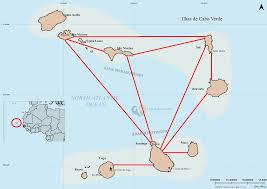Cabo Verde: An Overview of the Stunning Atlantic Islands

Introduction
Cabo Verde, an archipelago located off the western coast of Africa, is increasingly becoming a focal point for tourists and environmentalists alike. Comprised of ten volcanic islands, this nation is celebrated for its stunning landscapes, rich cultural heritage, and growing tourism industry. With changes in global travel patterns, understanding Cabo Verde’s relevance is essential for travelers and policymakers focusing on sustainable development and preservation.
Tourism Boom in Cabo Verde
According to the Cabo Verdean government, tourism is now one of the main economic drivers of the country, contributing over 25% to its GDP. In 2023, the islands welcomed a record 800,000 tourists, a 15% increase compared to the previous year. The popular islands of Sal and Boa Vista attract sun-seekers with their pristine beaches, while Santo Antão and Fogo appeal to adventure enthusiasts with their hiking trails and volcanic landscapes.
Cultural Heritage and Events
Cabo Verde’s unique blend of African, Portuguese, and Brazilian influences results in a rich cultural tapestry. Annual events such as the Cape Verdean Carnival and the Festas de São João highlight the nation’s vibrant traditions. The islands also produced globally acclaimed musicians, such as Cesária Évora, who have brought Cape Verdean morna music to international audiences, further promoting the nation’s cultural significance.
Environmental Concerns and Initiatives
As Cabo Verde’s tourism industry flourishes, environmental sustainability has become a pressing concern. The country’s limited freshwater resources and vulnerability to climate change necessitate immediate attention. In recent years, the government has initiated various eco-friendly tourism programs, such as the ‘Green Cabo Verde’ initiative, aimed at promoting sustainable practices among locals and visitors alike. International collaborations with NGOs have also been established to tackle waste management and promote renewable energy sources.
Conclusion
Cabo Verde stands at a pivotal crossroad where it must balance the booming tourism market with environmental sustainability. With more countries focusing on eco-friendly tourism, Cabo Verde’s efforts in this regard will likely set a precedent for others in the region. As the world turns its gaze towards these enchanting islands, both tourists and policymakers have an opportunity to ensure that the beauty and culture of Cabo Verde can be preserved for future generations. The nation’s trajectory in the upcoming years will be crucial to defining its path towards sustainable development, making it a key case study in tourism management and conservation.
